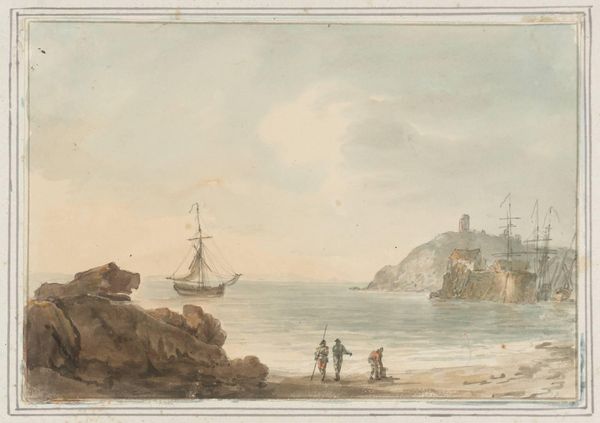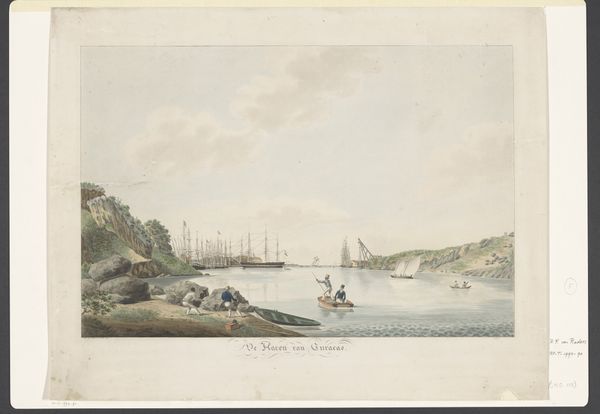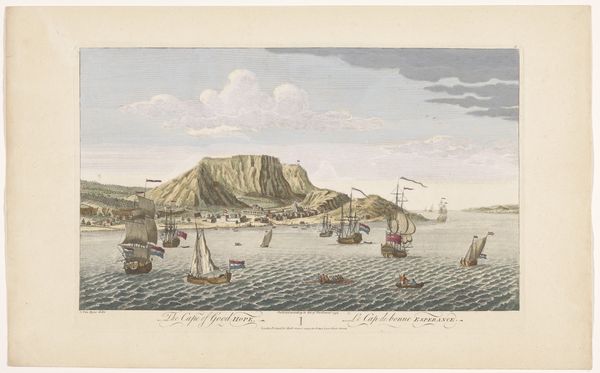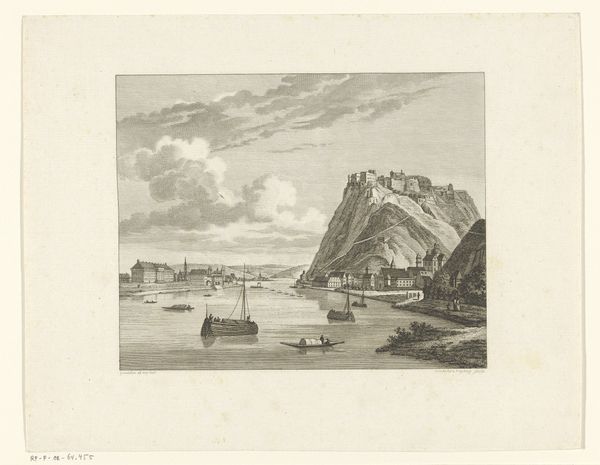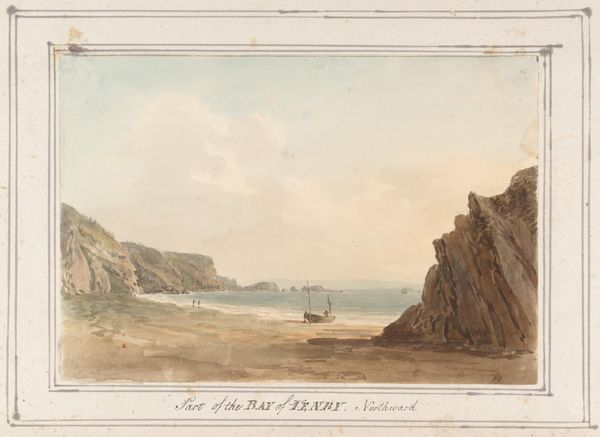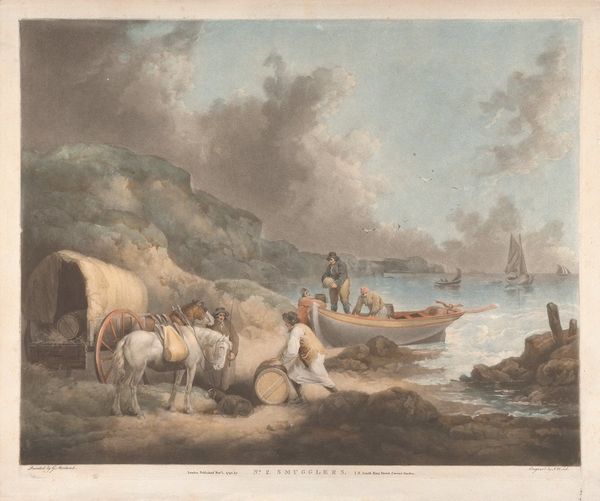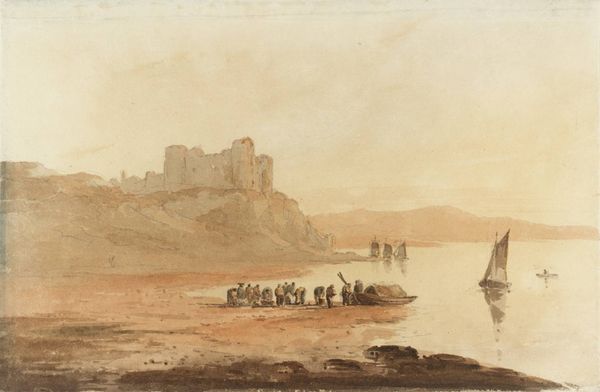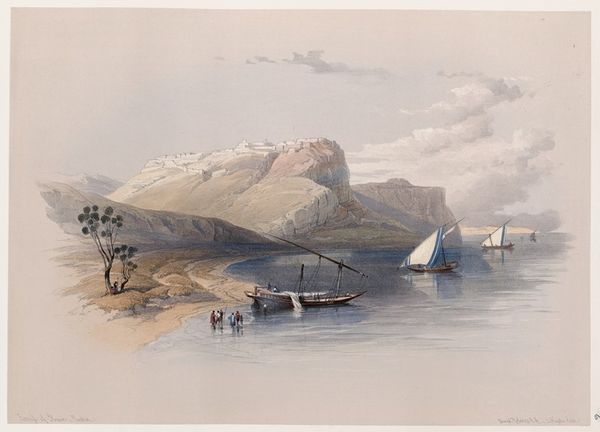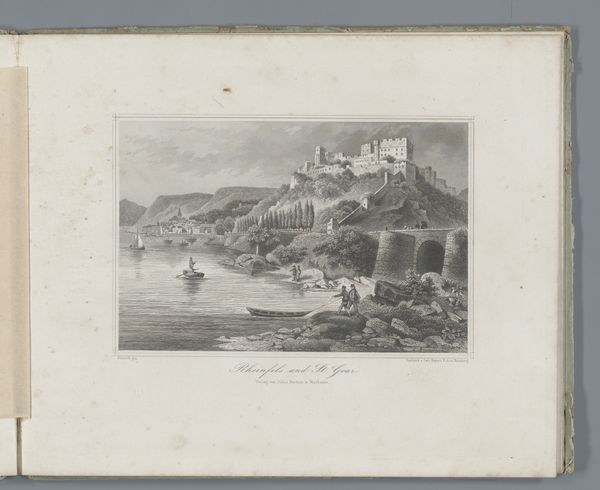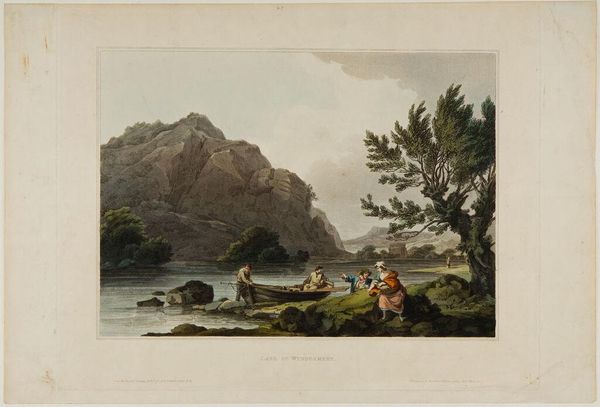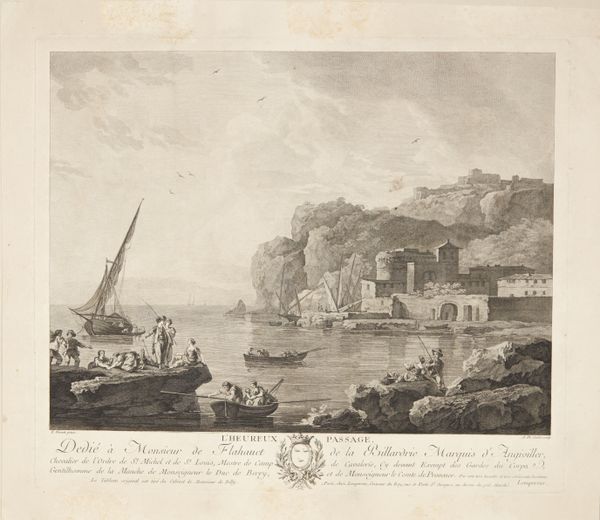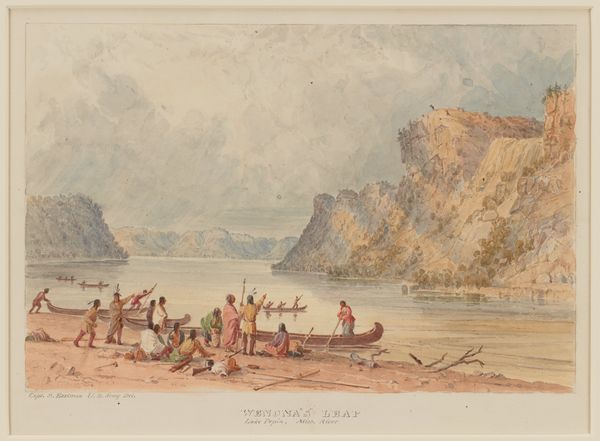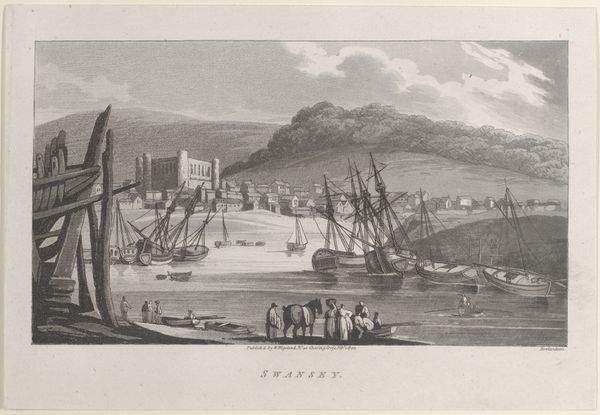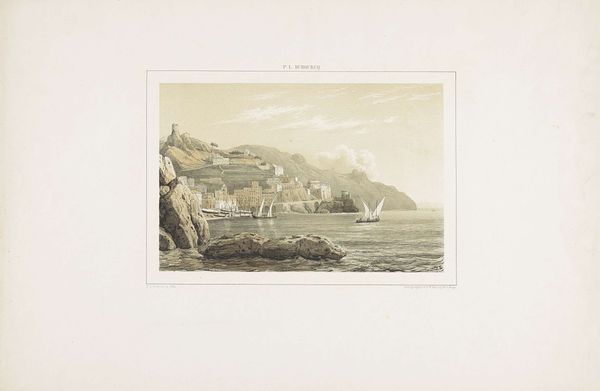
drawing, lithograph, print, etching, plein-air, paper, watercolor
#
drawing
#
water colours
#
lithograph
# print
#
etching
#
plein-air
#
landscape
#
charcoal drawing
#
paper
#
watercolor
#
romanticism
#
watercolour illustration
Copyright: Public Domain
Curator: Here we have a print titled *Robin Hood’s Bay*. Attributed to Francis Nicholson, the piece captures a bustling seaside scene, likely rendered sometime in the 18th or 19th century, currently residing at the Art Institute of Chicago. Editor: Immediately, I notice the stark contrast between the detailed foreground activity and the softened, almost hazy rendering of the background. It creates a sense of immediacy, pulling you into the daily life depicted on the beach. The materiality looks watercolor and some sort of early print process, yes? Curator: Indeed, the artwork combines watercolor, etching and lithography, layering techniques to bring out tonal values, as you point out, in the foreground compared to a romantic depiction of distance and atmosphere in the vista. Symbolically, consider the way light plays. The bright, almost industrious energy near the shore sharply contrasts with the more diffuse, ethereal glow on the distant horizon and clifftop community. This hints at societal layers – the working class versus the higher echelons of society looking down upon them from above, literally and figuratively. Editor: It is about labour and how coastal communities lived, relying on the natural materials to hand and the technologies available at the time for reproduction and trade. Nicholson's combination of print and watercolor suggests to me that there was an interest in bringing a handmade process and industrially fabricated picture together. Curator: You make an important connection about materials speaking about societal development and history. Even something as simple as the anchoring presence of the ship suggests a desire for progress and economic enterprise beyond the simple fishing village in the foreground. Editor: It's interesting how that vessel simultaneously acts as an extension of the community and also something separate that reaches outward. It is a thing and a process all in one go. Curator: These nuances allow for several layers of viewing, reminding us that images like this hold far more weight than initial visual impressions let on. Editor: Yes, absolutely. This type of imagery can offer many layers and trajectories for discussion regarding the relationship between material realities and the communities who used these skills to represent the society they lived in.
Comments
No comments
Be the first to comment and join the conversation on the ultimate creative platform.
